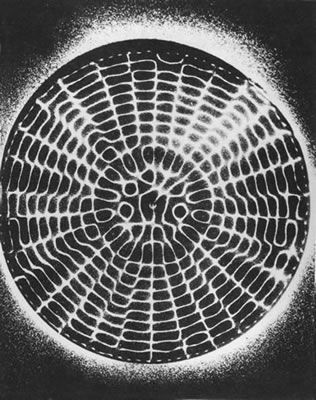
How Vibrational Frequencies can Help REGULATE YOUR NERVOUS SYSTEM

Vibrational Frequencies and Brain Activity
Vibrational frequencies refer to the oscillations or vibrations of energy that occur at different rates or speeds. These frequencies can be measured in terms of cycles per second, or hertz (Hz). Different types of energy, such as light, sound, and electromagnetism, can have different vibrational frequencies.
It is believed that different vibrational frequencies can affect brain waves and nervous system activity in various ways. The brain produces different types of brain waves, each of which is associated with different states of consciousness and brain activity. These brain waves can be measured using an electroencephalogram (EEG), and they are typically categorized into four main types: alpha, beta, delta, and theta.
Alpha brain waves are associated with a relaxed, awake state and are typically seen when a person is in a state of relaxation or meditation. Beta brain waves are associated with a more alert, active state and are typically seen when a person is engaged in activities that require concentration and focus. Delta brain waves are associated with deep sleep and are typically seen when a person is in a state of rest or sleep. Theta brain waves are associated with a state of relaxation or meditation and are typically seen when a person is in a state of deep relaxation or meditation.
- Delta Brain Waves have a frequency range of 0.5-4 Hz.
- Theta Brain Waves have a frequency range of 5-7 Hz.
- Alpha Brain Waves have a frequency range of 8-12 Hz.
- Beta Brain Waves have a frequency range of 13-30 Hz.
It is believed that certain vibrational frequencies can influence brain waves and nervous system activity by influencing the brain’s electrical activity. For example, some research suggests that listening to music with certain vibrational frequencies may help to alter brain waves and nervous system activity in a way that promotes relaxation and stress reduction. Similarly, other vibrational frequencies, such as those emitted by electronic devices, may have a negative impact on brain waves and nervous system activity. More research is needed to fully understand the ways in which vibrational frequencies can affect brain waves and nervous system activity.

Using Frequencies to positively alter and regulate your Nervous System
- Music: Music is a powerful form of vibrational frequency that can have a range of effects on the body and mind. Different types of music can have different vibrational frequencies, and some research suggests that certain types of music may be helpful in promoting relaxation, reducing stress and anxiety, and improving sleep.
- Sound therapy: Sound therapy, also known as sound healing or sound massage, involves the use of sound and music to promote relaxation and well-being. Sound therapy may involve the use of instruments such as singing bowls, gongs, or tuning forks, or it may involve the use of music or other sounds to create a relaxing and soothing environment.
- Meditation: Meditation is a practice that involves focusing the mind and bringing awareness to the present moment. It is believed to have a number of potential benefits for the body and mind, including reducing stress and anxiety, improving sleep, and promoting relaxation. Many people find that incorporating meditation into their daily routine can help to regulate the nervous system and promote overall well-being.
Finding the right “Vibe” for you
- Consider your goals: What are you hoping to achieve by using vibrational frequencies? Do you want to relax and reduce stress, improve sleep, or boost your energy? Different vibrational frequencies may be more or less effective at achieving different goals, so it is important to consider your specific needs and goals when selecting a frequency.
- Experiment with different frequencies: Different frequencies can have different effects on the body and mind, so it is a good idea to try out a range of frequencies to see which ones work best for you. You can experiment with different types of music, sound therapy, or meditation techniques to find the frequencies that work best for you.
- Listen to your body: Pay attention to how your body responds to different frequencies. Do you feel more relaxed and energized after listening to certain frequencies? Do you find that certain frequencies make you feel more anxious or stressed? By paying attention to your body’s reactions to different frequencies, you can get a better sense of which frequencies are most effective for you.
- Consult with a healthcare provider or trained professional: If you are using vibrational frequencies for therapeutic purposes, it is a good idea to consult with a healthcare provider or a trained professional for guidance. They can help you to determine the best frequencies for your needs and can provide guidance on any potential risks or interactions.
It is important to note that the effectiveness of these vibrational frequencies in regulating the nervous system can vary depending on the individual and the specific vibrational frequency being used. It is always a good idea to speak with a healthcare provider or a trained professional before using vibrational frequencies for therapeutic purposes.

Subscribe To Our Weekly Newsletter
Share:
Related Posts


a NOURISHING alternative to COFFEE

BIOENERGETIC Hygiene





